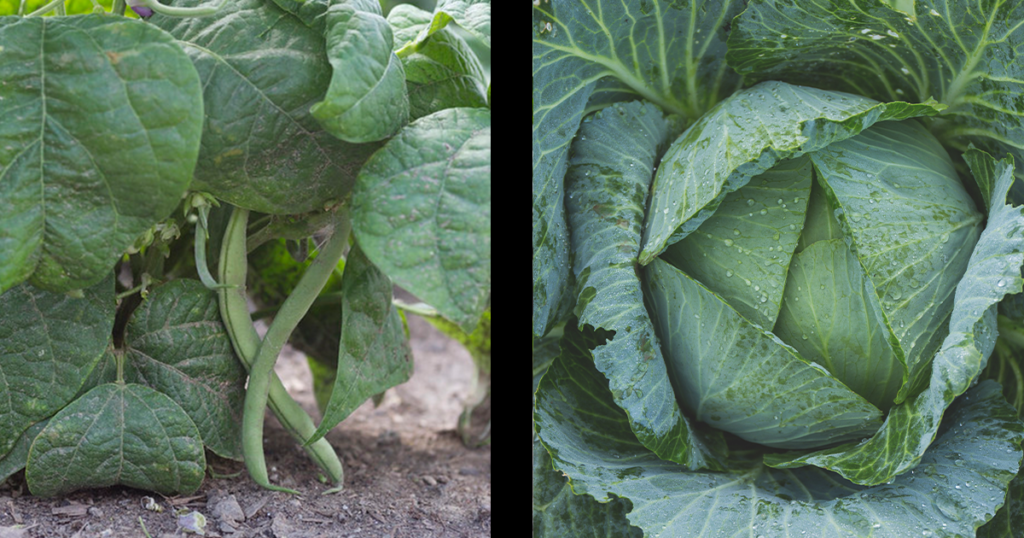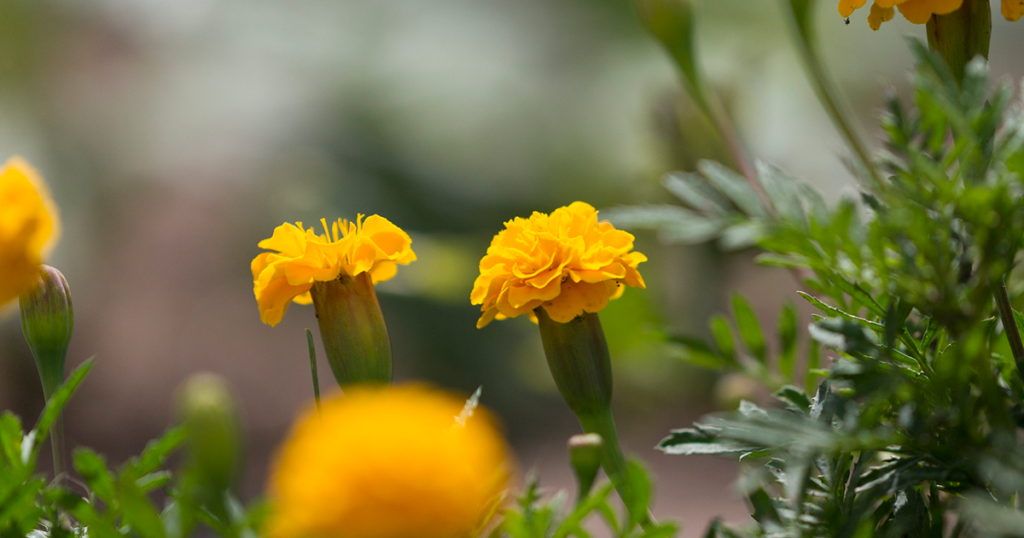Companion Planting: Flowers or Veggies or Both?!
Sunrise or sunset? Chocolate or vanilla? Cats or dogs? While there are plenty of either/ or decisions out there for us to make, for gardeners. there’s one more to wrestle with: flowers or vegetables? Beauty is the fuel of the soul, but food is the fuel of the body – so how do you decide which one to grow? If you’re having a hard time choosing, you’ll be happy to know that in this case the best choice might actually be to pick both! Companion planting is the practice of choosing plants that are complementary to each other.
The plants can benefit each other in a number of ways. For instance, larger and heartier plants can offer natural protection from wind and rain to smaller, more delicate plants. There are also some plants that certain pests absolutely hate. You can protect plants that pests love to devour by planting the ones they hate close by, and letting those deterrent plants act like natural scarecrows for pests! Some plants are also just cheerleaders for other plants, encouraging them to grow stronger, and with more yield – which is great news if you’re hoping to get a good crop.
However, it’s important to note that as much as some plants get along great, there are others that can’t stand being near each other. That’s why it’s important to do some research ahead of planning out your garden – after all, it’s not like the plants can move themselves away from each other.
Here are a few ideas to get you started with companion planting:
Companion Planting with Beans!
Beans get along well with a lot of ‘c’ vegetables: carrots, cabbage, cauliflower, cucumber and corn. They also like marigolds. If your soil has a nitrogen deficiency, beans can actually help fix that. They don’t like growing near chives, garlic and leeks.
Cucumbers
Peas, lettuce and celery are great to partner with cucumbers. Your cauliflower, potatoes and basil need to go somewhere else, though.
Lettuce
If you’re growing lettuce, you can put your carrots, radish, strawberries and beets near them for optimal results, but not beans and parsley.
Onions
For onions, it’s a good idea to plant broccoli, cabbage, lettuce and tomatoes nearby. Beans and peas should go somewhere else, though.
Companion Planting with Peppers
If you want to grow peppers, you should also plant tomatoes, parsley, basil and carrots nearby. You’ll need to find a different spot for your fennel, though.
Tomatoes
Tomatoes are very friendly plants, because they get along with so many others, including (but not limited to): asparagus, basil, beans, carrots, celery, chives, cucumbers, garlic, lettuce, onions, parsley and peppers. That isn’t to say they get along with every other plant, though – corn, dill, fennel and potatoes are not good growing companions for tomatoes.
By now, you’re probably wondering about flowers. Which ones are good to go in the garden near the vegetables?
Alyssum
These beautiful flowers that grow in clusters have two major benefits for your vegetable garden. Not only do they help prevent weeds if you plant them between your rows, but they also attract pollinators to your garden.
Calendula (Pot Marigolds) Are Common for Companion Planting!
If you’re growing asparagus and tomatoes, you’re going to want some of these in your garden, because they’re great helpers while also being a natural repellent for many nematodes. Plenty of gardeners across North America use marigolds as the perfect companion plant to many vegetables. However, they can attract slugs in some climates, so be aware of that!
Nasturtium
These are another flower that benefit tomatoes – as well as cucumbers, melons and radishes. They trap aphids, while deterring cucumber beetles and whiteflies and attracting predator insects.
Yarrow
Hoverflies, ladybugs and wasps all love the smell of yarrow. These insects are beneficial to attract to your garden, because they eat garden grubs. On top of that, aphids don’t like the smell of yarrow, and will stay away. And one more bonus? Yarrow is a perennial.
Whatever you decide to grow in your garden, make sure you give it the best start possible by planting it in BigYellowBag Black Garden Soil. Our soil is packed with essential nutrients and organic matter, which is vital for new growth. It’s also a great growing medium, because it’s made up of a mix of black loam, peat loam, compost and manure, it has light and fluffy properties. Loam is a soil type comprised of sand, silt and clay in the right ratios so that there is a perfect balance of drainage and moisture retention.
Happy gardening!




